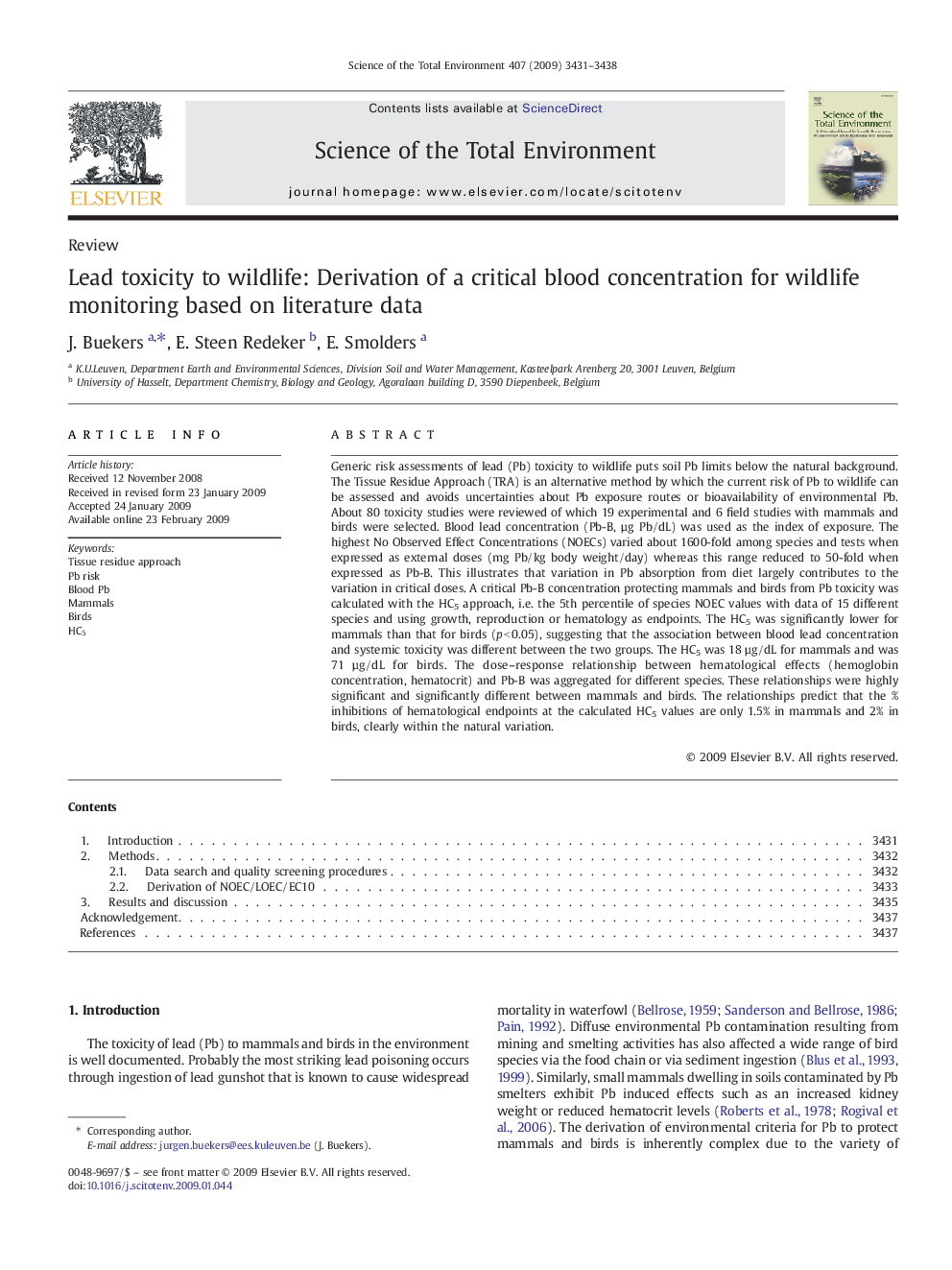| کد مقاله | کد نشریه | سال انتشار | مقاله انگلیسی | نسخه تمام متن |
|---|---|---|---|---|
| 4432089 | 1619899 | 2009 | 8 صفحه PDF | دانلود رایگان |

Generic risk assessments of lead (Pb) toxicity to wildlife puts soil Pb limits below the natural background. The Tissue Residue Approach (TRA) is an alternative method by which the current risk of Pb to wildlife can be assessed and avoids uncertainties about Pb exposure routes or bioavailability of environmental Pb. About 80 toxicity studies were reviewed of which 19 experimental and 6 field studies with mammals and birds were selected. Blood lead concentration (Pb-B, µg Pb/dL) was used as the index of exposure. The highest No Observed Effect Concentrations (NOECs) varied about 1600-fold among species and tests when expressed as external doses (mg Pb/kg body weight/day) whereas this range reduced to 50-fold when expressed as Pb-B. This illustrates that variation in Pb absorption from diet largely contributes to the variation in critical doses. A critical Pb-B concentration protecting mammals and birds from Pb toxicity was calculated with the HC5 approach, i.e. the 5th percentile of species NOEC values with data of 15 different species and using growth, reproduction or hematology as endpoints. The HC5 was significantly lower for mammals than that for birds (p < 0.05), suggesting that the association between blood lead concentration and systemic toxicity was different between the two groups. The HC5 was 18 µg/dL for mammals and was 71 µg/dL for birds. The dose–response relationship between hematological effects (hemoglobin concentration, hematocrit) and Pb-B was aggregated for different species. These relationships were highly significant and significantly different between mammals and birds. The relationships predict that the % inhibitions of hematological endpoints at the calculated HC5 values are only 1.5% in mammals and 2% in birds, clearly within the natural variation.
Journal: Science of The Total Environment - Volume 407, Issue 11, 15 May 2009, Pages 3431–3438